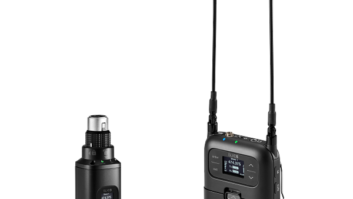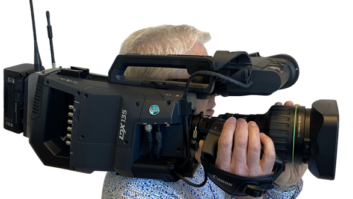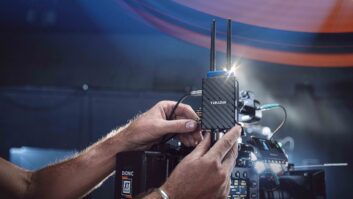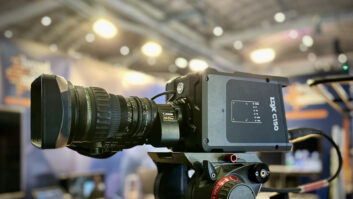
Wireless links are aiming higher, with new standards proposed by the newly formed Wireless Gigabit Alliance in the 60GHz spectrum that can handle uncompressed HD.
Wireless bandwidths are increasingly crowded, but we want them to carry more information, particularly HD video. This applies as much to consumers as to broadcasters, which is why a multi-gigabit specification has just been released from the new Wireless Gigabit Alliance (made up of all the main WiFi chip manufacturers, such as Intel, Broadcom and Atheros, and device manufacturers).
The consumer proposal is for a low-power (about a quarter the power of WiFi), short range system (up to about 10m, line of sight – as the short wave signals can’t easily go through solid objects), but as with WiFi in the 2.4 and 5GHz bands (which WiGig also supports), widespread adoption will bring down costs and could make it more affordable for use as camera links. The WiGig specification provides for data transfer rates up to 7Gbps, compared to the maximum 600Mbps transfer rate of the fastest 802.11n WiFi standard, although real life throughput would be a lot lower.
Sony’s flagship TV set, the Bravia ZX5 (or XBR10), already uses a 60GHz Wireless link to connect to its control box, and there is an existing 60GHz WirelessHD initiative that is ahead in commercialisation, but doesn’t have the support of the big chip manufacturers. The latest WirelessHD 1.1 specification aims for data rates of 10-28Gbps, and will support 3D and 4K resolution.
NHK on ice
The unlicensed 60GHz range has also been used for TV production. NHK experimented with 60GHz at the 2006 Winter Olympics in Turin, using a COFDM wireless camera system but it required about 30 receive sites to cover the ice rink. “A conventional COFDM system used just a single pair of antennae to cover the same area,” commented Dave Remnant, Director, Acorn Technologies ([email protected]), reseller for Quicklink, Boxx TV and Masthead Antenna Technology.
However, the 60GHz system had benefits: “There was no delay, because it had enough bandwidth, and the picture quality was excellent,” but the set up time for that many receive points would make it impractical for most TV stations.
It would make more sense to him as a point-to-point system for a short line-of-sight connection. Although this wouldn’t lend itself to mobile connections, it would be portable and have potential as a replacement for short-run, uncompressed fibre links, such as at the Wimbledon Tennis Championships (where cable has to go though public areas) or at the US Golf Masters (where microwave towers are not allowed because the organisers think they spoil the view).
There are uncompressed links already available using 60GHz, such as the Vubiq VuLink VL300 launched at NAB (which Acorn hopes to represent in the UK), with a range of about 150m in HD (1.485Gbps) or 350m for SD (with a pair of systems offering duplex communication). There is also an antenna option with increased gain that will go up to about 500m (“but you need very accurate line up”).
It also has the advantage of being “impervious to fog, rain, dust and snow, which affects microwave transmissions,” said Remnant.
“Because we are streaming pure uncompressed video, there is no need for additional processing at both ends of the link, which increases cost and latency,” explained Mike Pettus, Vubiq’s CTO. “Remarkably, our system is actually faster than fibre – there is essentially zero lag time through the link.”
Other options
The UK regulator, OFCOM, had been looking at using the 10GHz bandwidth for the 2012 Olympics in London, but so far the manufacturers have been resisting that, as 7GHz works well (as used by Link Research, the previous company Remnant helped found).
For general on-camera links there are also phone-based technologies, using 3G and 4G standards, such as from Quicklink, which can offer worldwide coverage, but limited bandwidth.
60GHz could have a place on location, giving the option of live, uncompressed links to an on-set editor and, importantly, to back-up disks, allowing productions to meet insurance requirements to have multiple safety copies of the video without any risk from corrupt data on the camera’s own recording media (although as some cameras, such as Arri’s Alexa, allow multiple recording systems to operate simultaneously on the camera, these risks can be addressed in other ways). Current MIMO-based wireless on-set systems, such as those from Boxx, Transvideo and IDX, are in the 5GHz band and have limited range, but some can handle 10-bit video.







